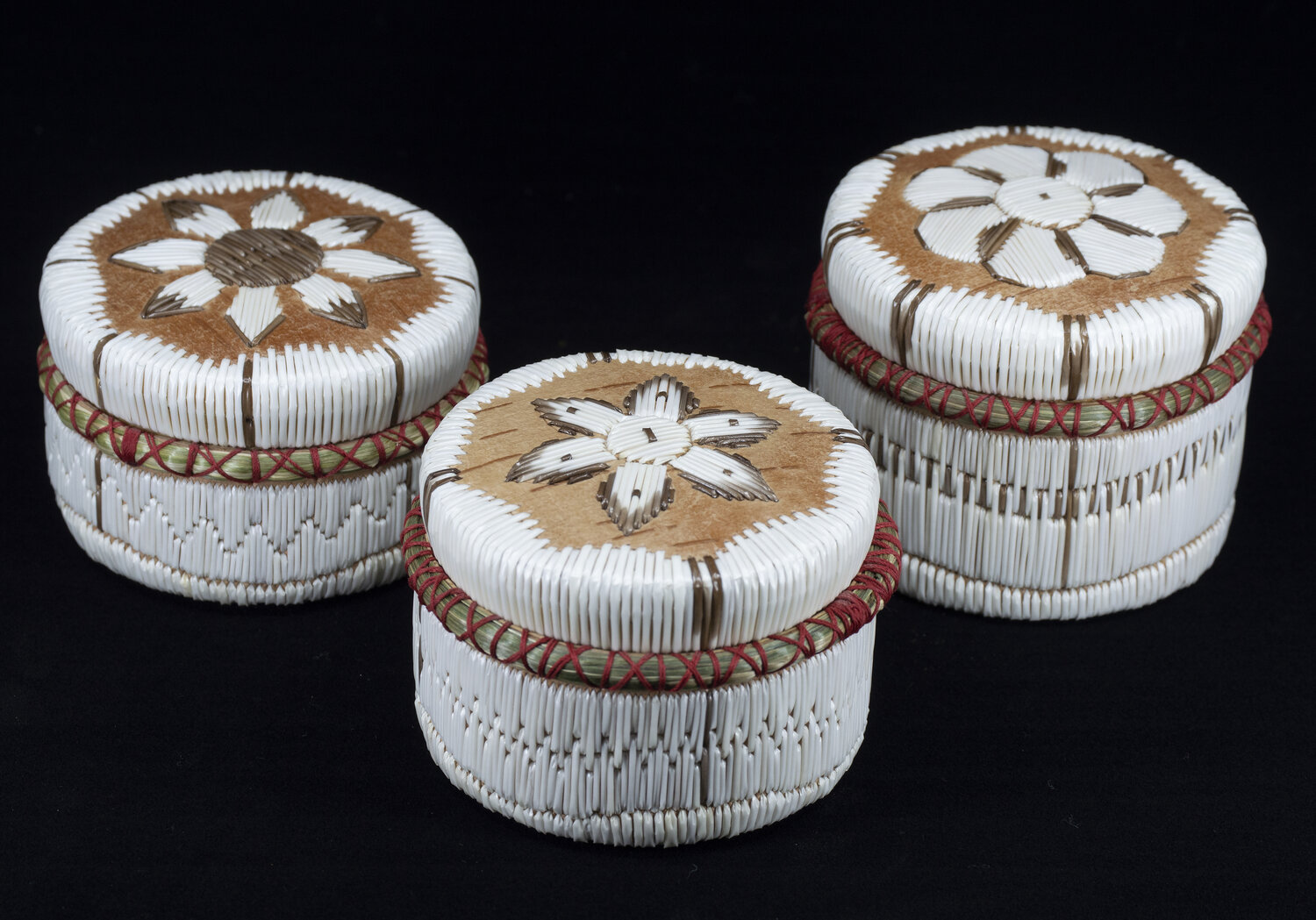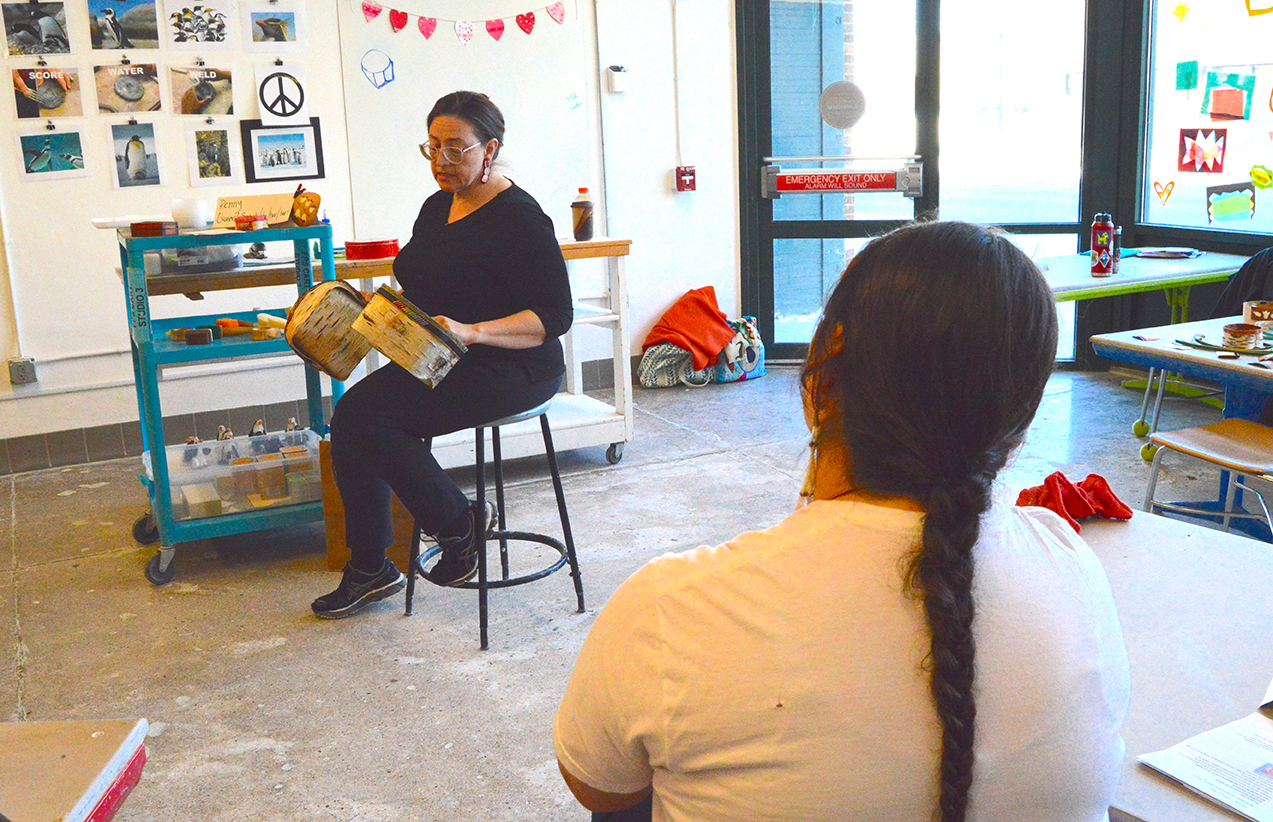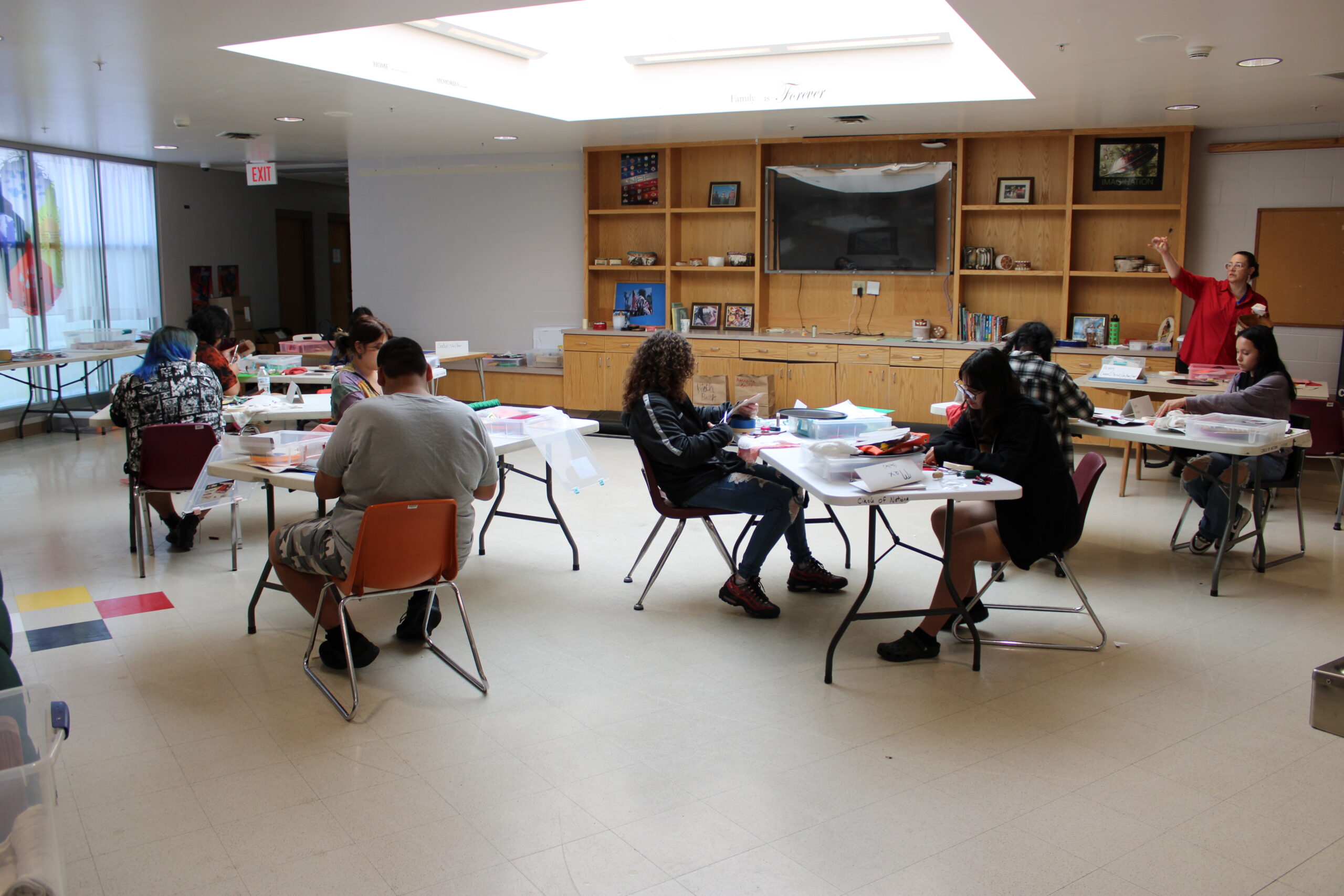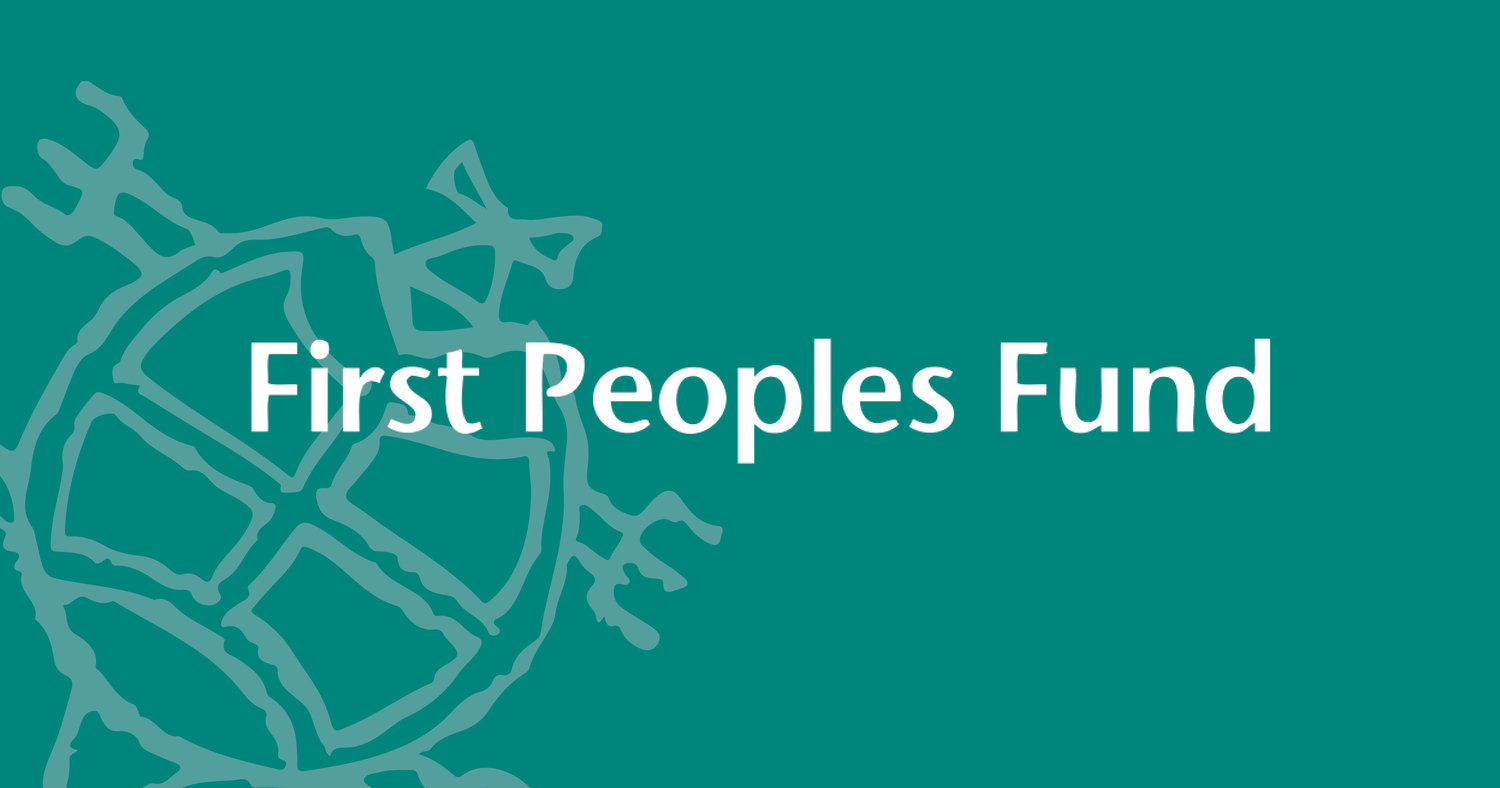The Rural Regenerator Fellowship brings together individual artists, makers, and culture bearers, grassroots organizers, community development workers, public sector workers and other rural change-makers who are committed to advancing the role of art, culture and creativity in rural development and community building. Recently, we asked a collective of local writers to sit down with current Rural Regenerator cohort members to share more about their work.
“People look at my baskets and they don’t understand what they’re seeing, they don’t recognize my art,” Penny Kagigebi says. She’s a White Earth Ojibwe artist of mixed descent, working in what at first seem like familiar indigenous forms: porcupine quill boxes and birchbark baskets.
But there’s a twist: Stitched into the stunning yet utilitarian traditional creations are rainbows with contemporary materials and basket styles that had fallen out of use, expressions of Penny’s identity as a Queer2-Spirit person.
“I first saw a porcupine quill box in the 1990s and it was like I was struck by lightning. My first thought wasn’t, “That’s so beautiful,” but, “I have to learn how to make these.” The boxes have “been made by northern woodland people since the beginning of time to hold food or medicine,” she says. “Every seam in the old ones is threaded with sweetgrass which repels insects and the birchbark contains properties for preservation.” The quilling on the box lids served as an ingenious labeling system: “If it was in the storage pit with dried deer meat in it,” Penny notes, “then the cover might have a picture of a deer” rendered in porcupine quills.
Searching for a teacher took some time. “Nobody really knew anyone still making them.” Penny’s father came from “a white homesteader family” and her mother was Ojibwe but had been taken away to boarding school, so Penny wasn’t raised with this traditional knowledge. “My brother and I really had to look for it,” she says. She found Mel Losh, a Leech Lake maker of quill boxes and beaded bandolier bags, who taught her quilling and quill box construction techniques—one of the few Ojibwe artists keeping the porcupine quill box art alive.
Penny also learned from her brother, Bill Paulson, how to make birchbark baskets in a typical, winnowing basket style, a tray-like shape with low, sloped sides. “Now I make more bowl-like and upright baskets” she says.

After mastering the ancient techniques, Penny began to explore ways to incorporate new materials and colors. “As things moved along, I really saw this as an opportunity to queer the artform.” She started trimming her birch baskets with machine-stitched ribbon, replacing the traditional edging of flexible willow branches, and using embroidery thread in a range of colors in place of the standard basswood cordage holding the structure together. And she’s brought embellishments of porcupine quill and appliqué beadwork to her basketry, bridging the quill box and birch basket artforms. These innovations in basket design and colors are why Penny says, “My work and what my focus is right now are not recognizable by a lot a people.”

Reclaiming Traditional Roles
Queering her ancestral art is part of a larger process that Penny calls “two-spirit cultural reclamation,” an attempt to reclaim the roles that two-spirit (2S) and LGBTQ people have traditionally played in Native life. “There are large gaps in how our tribal communities are functioning and the gap is the two-spirit people who are missing,” she says. “Two-spirit people bring perspective and balance. We make excellent negotiators.”
Penny notes other essential roles 2S people have historically filled, including medicine people and warriors. “Two-spirit people were often matchmakers. That wasn’t a romantic role, that was a political role, focusing attention of two quarreling families on the wellbeing of the eventual grandchildren. Two-spirit people were the first to greet people who are visiting. They carry ceremony and taught children about how to be good citizens of their village.”
Penny believes that “when two-spirit people are standing in their gifts, when we realize who we are and are able to be who we are in safety, it will bring wellbeing to our communities.” But living openly as an 2SLGBTQ person entails risk, due to discriminatory attitudes learned from colonization and residential boarding schools. “There’s danger to being two-spirit in our communities,” and many struggle to get access to housing, transportation, or basic sustenance, or to stay safe from physical violence. According to the Trevor Project, two-spirit youth are two and a half times more likely to report suicide attempts than non-Native LGBTQ young people.“Many 2S flee to urban gay spaces and encounter racism in those spaces, so they are not safe in either space.”
Her artwork has opened new pathways to talk about traditional roles of 2SLGBTQ people in Native life. “Through the basket making, just being able to show the baskets with rainbows, it’s sparking conversations. It’s about making connections with people and building supportive relationships.” She explains that the rainbows in her art reflect Ojibwe cultural knowledge, “relaying the information that we are all different and we’re meant to be different,” in contrast with non-Native LGBTQ Pride rainbow symbolism.
She teaches basketry workshops to people who want to learn traditional quillwork and birchbark methods. After a recent multi-day workshop with Native teens, one came up and thanked her for creating a space where 2SLGBTQ youth can feel safe.
Penny hopes that by working with younger generations, she will strengthen protections for the birch trees. She discourages following recent home décor trends which feature whole trees taken for decorative poles, sticks and branches. Removing these young birch trees from the forest before they’re mature enough to reproduce is contributing to the decline of the birch forest over the past forty years. Ojibwe bark-gathering methods handed down across generations preserve the life of the tree, so she helps her students understand that the process needs to be done with care and respect. “When people become more familiar with birch trees, people will work to protect them.”

Nurturing Each Other
The Springboard Rural Regenerator fellowship has given Penny the resources and support to explore life as a full-time artist. “I got the breathing room to figure myself out and how I can be a functioning artist.” She hopes to establish a separate studio space outside her home and engages teaching assistants for her workshops, to strengthen the skills and leadership of the next generation. But she is most moved by the emotional support the Rural Regenerators cohort has brought her. “They see value in what I’m doing that I didn’t see for myself,” she says.
During one Springboard retreat, Penny got to talking about the idea of “lateral violence”—when members of a group targeted for oppression lash out at members of the same group, as sometimes happens in Native American, 2SLGBTQ, and other communities. Penny is a builder, a connector, and she wanted to imagine a positive alternative to simply opposing oppression and violence. “I want radical lateral nurturing,” she said to her Rural Regenerator colleagues, and the term struck a chord.

“We create culture by what we normalize and what we accept, what we demand for ourselves. If we demand radical lateral nurturing, that’s the path to recognizing lateral violence is not acceptable. I really wanted the ‘radical’ on there, because this is an amplification of what I’ve already been doing.”
Through Penny’s work as an artist and an advocate, she models this radical lateral nurturing: helping reclaim two-spirit cultural knowledge, protecting birch trees, creating safe spaces, and stitching the rainbows back into her community’s life.
Continue Reading


